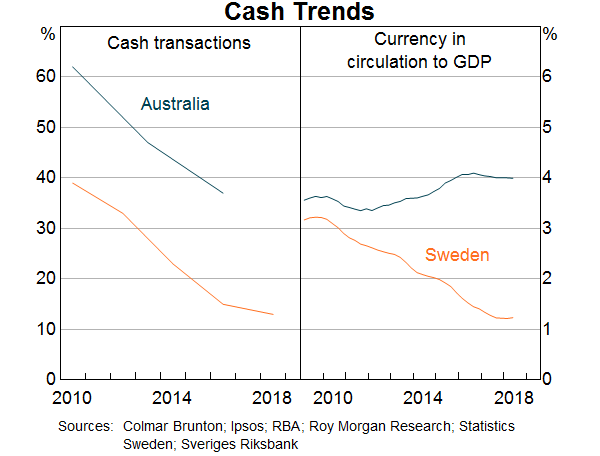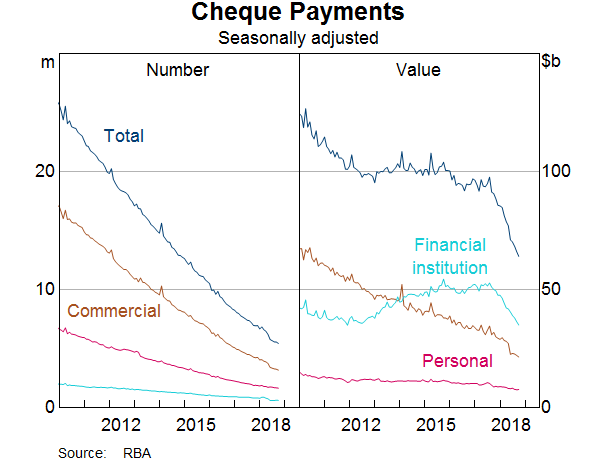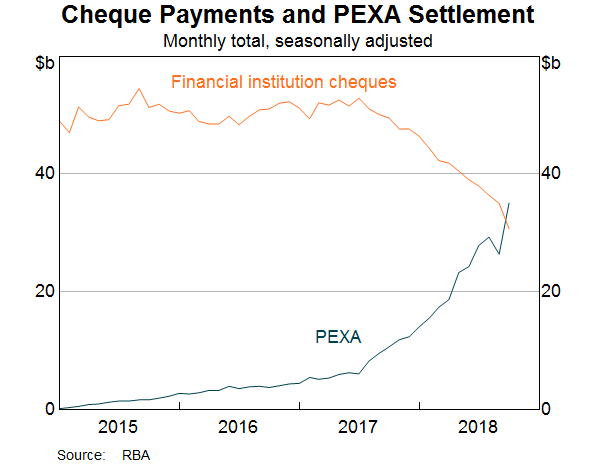Speech Opening Panel Remarks on the Regulatory Landscape for Payments

Tony Richards
Head of Payments Policy Department
Australian Payment Summit
Sydney –
- Audio 22.79MB
- Q&A Transcript
- Download 200KB
I would like to thank AusPayNet for the invitation to speak at this session on the regulatory landscape. I thought it might be useful to start the session with a quick tour of some of the issues on the Reserve Bank's radar in our role as the primary regulator of the payments system.
I'll touch first on the significant change that is underway in the payments mix in Australia. As we are all aware, the use of what we might call the ‘analogue’ payment methods (cash and cheques) is declining, while the use of electronic payments (like cards and bank transfers) is growing. If anything, these trends have accelerated in recent years as new technologies have made electronic payment methods more convenient, accessible and secure. The availability of the New Payments Platform will provide additional impetus to the migration towards electronic payments.
As the Governor noted yesterday, the use of cash in transactions has been declining. But it is still used for a significant share of consumer purchases and some groups of the population remain particularly reliant on it. In addition, there is still strong demand for Australian banknotes. So our journey towards a less-cash or near-cashless payment system is much less progressed than the case of Sweden, which is the country people often talk about when contemplating a cashless economy (Graph 1).

As cash use falls, financial institutions may reduce their provision of cash services. There are already some signs of this in the ATM market, where bank and non-bank deployers have begun rationalising their fleets. Policy concerns could arise if there was a significant decline in ATM coverage that made it difficult for people to access cash, particularly in remote or regional locations. However, some sensible consolidation of the ATM network could result in a more efficient and sustainable ATM industry – one possibility is that this could come through some form of industry utility. I expect that we would have an open mind to an arrangement that resulted in a more sustainable ATM industry that continued to provide services where they are clearly still needed.
In the case of cheques, the latest monthly data show a sharp fall in use relative to a year ago – a fall of 23 per cent in the number of cheques and a fall of 30 per cent in the value of cheques. The number of household and business cheques written has been falling sharply for some time (Graph 2). What is noteworthy in the recent data is a very significant fall in the number of financial institution (or bank) cheques. This reflects a rapid shift in the real estate industry towards electronic conveyancing (Graph 3). Looking at the recent data, and considering the costs of maintaining the cheque system, we may be approaching the time that the industry might take a decision to announce the end of the cheque system. But as the Governor noted yesterday, it will be important that the payment needs of remaining cheque users can be met via alternative instruments.


As regards to cards, most of you will be aware that the Bank has been focusing on the cost of card payments to merchants – indeed I spoke about this issue at this conference last year. In particular, where a customer uses a dual-network debit card in a contactless transaction, we have been pushing acquirers to provide merchants with the ability to send the authorisation message via the lower-cost of the two networks. A range of stakeholders, including in Canberra, have also been calling for the industry to provide least-cost routing. However, the response of the major banks has been disappointingly slow, as the Governor noted yesterday. This appears symptomatic of a broader lack of competition in acquiring services. In many respects, the card industry seems to be dominated by the issuing side of the market, with the incentives sometimes being to push higher-cost over lower-cost payment systems. However, least-cost routing is coming and several of the major banks have pilots either underway or coming shortly. And for those merchants who would like access to least-cost routing now, two acquirers – Tyro and First Data – are already in a position to enable it across their entire customer base.
Let me touch briefly on the New Payments Platform. While the roll-out of the NPP has been somewhat slower than initially expected, transaction volumes have been growing steadily. The Payments System Board discussed the NPP last Friday and stressed the importance of the major banks continuing to work on their internal projects, so that their customers will be able to take full advantage of this important new infrastructure.
You may be aware that the Bank, with assistance from the ACCC, is undertaking a consultation on NPP functionality and access. The NPP provides a number of ways for entities to access the central infrastructure. However, concerns have been raised that the services offered through the NPP and the ways of accessing it are not yet meeting the needs of all entities. The Bank is keen for the NPP to be a platform for innovation, including from new entrants. Submissions to our consultation are due this Friday. We hope we will receive submissions from a wide range of entities, but especially from fintechs and other newer players. More details on the consultation are available on our website – if this is the first that you have heard of the consultation, and can only make a submission after the deadline, please get in touch.
Finally, I should note that the Bank is participating in the Council of Financial Regulators' review of the regulatory framework for stored-value facilities. The review is aiming to simplify and clarify the regulatory regime for these facilities, ensuring that regulation appropriately protects consumers while minimising barriers to innovation and competition. The Council agencies hosted an industry roundtable as part of the review earlier this month, which was very useful. I would expect that the Council will provide an update on the conclusions of the review in the first half of 2019.
So that is an overview of some of the payments issues that the Reserve Bank has been focusing on recently. I would be happy to provide further perspectives in the remainder of this session.